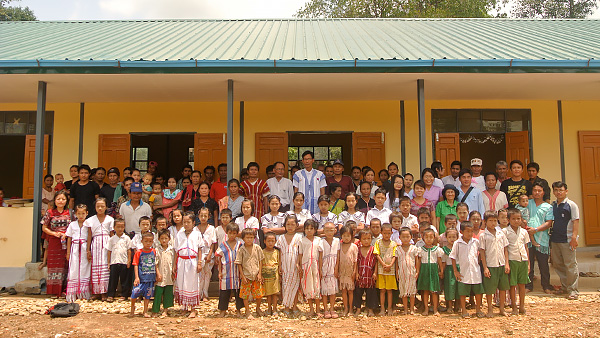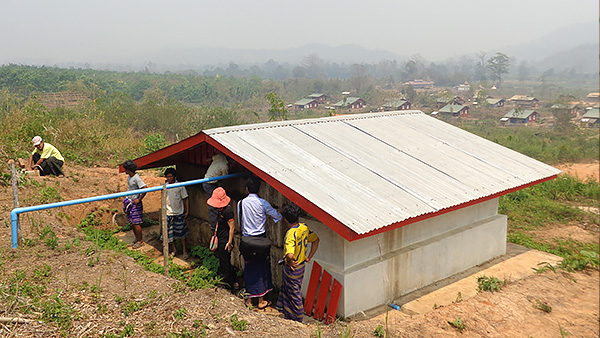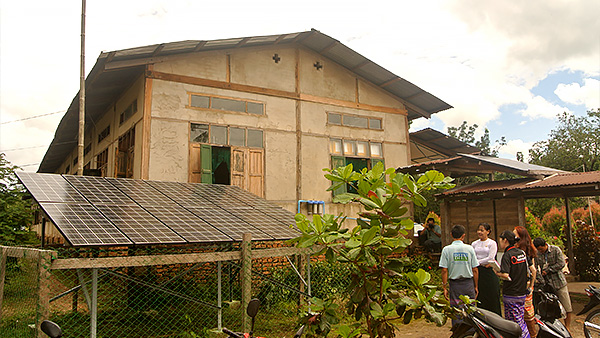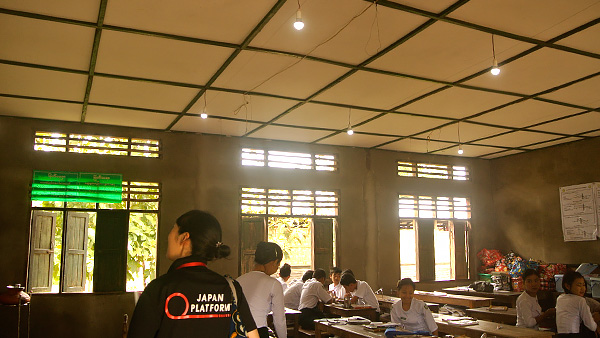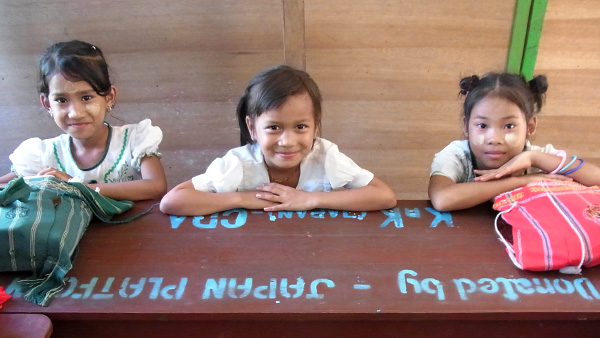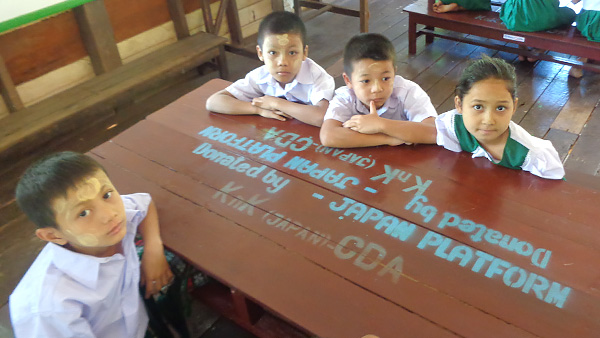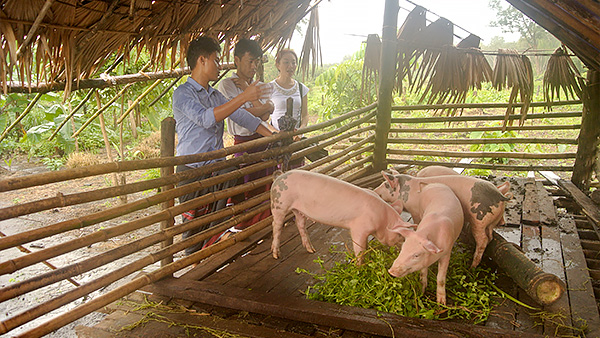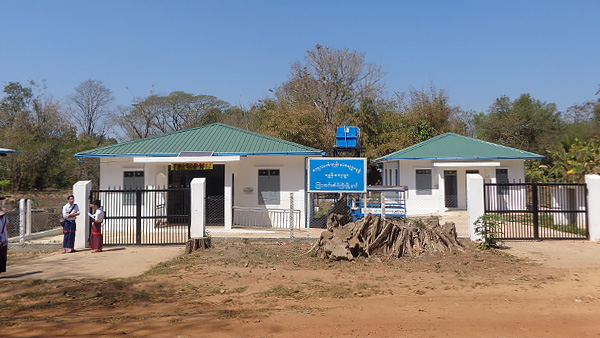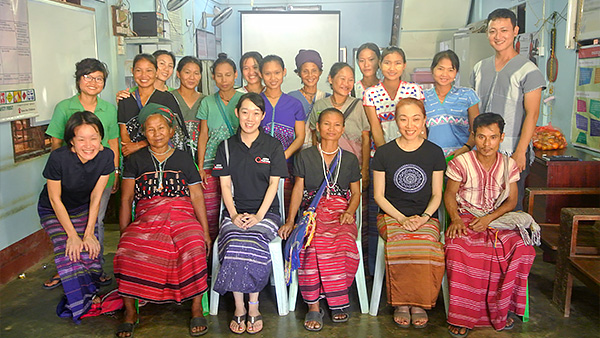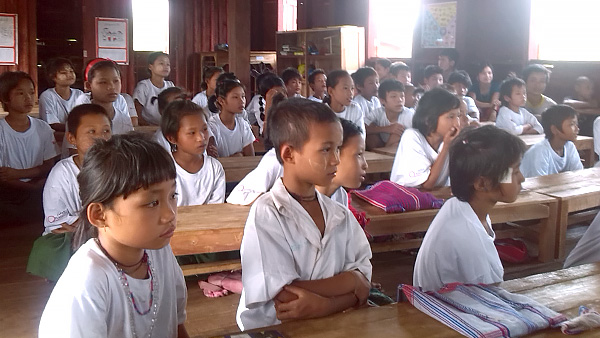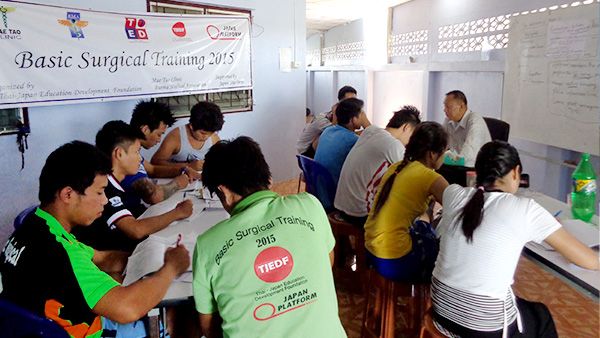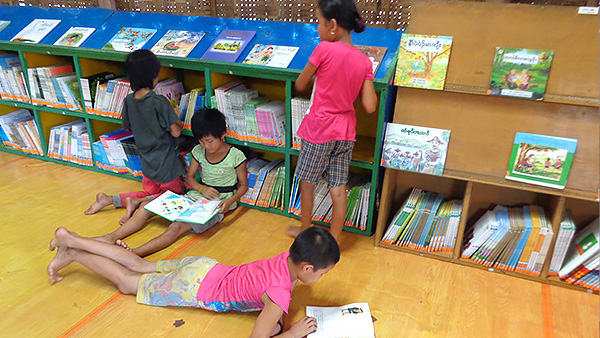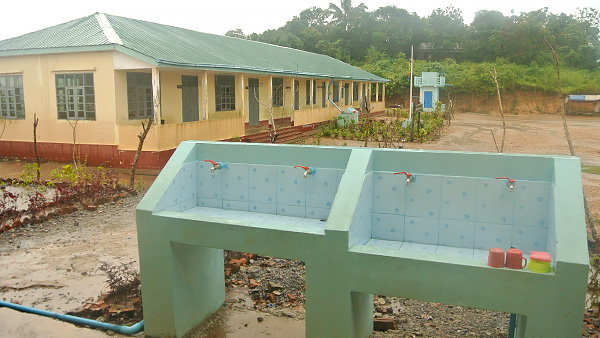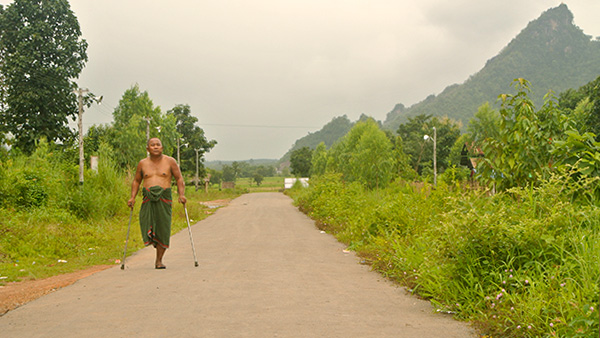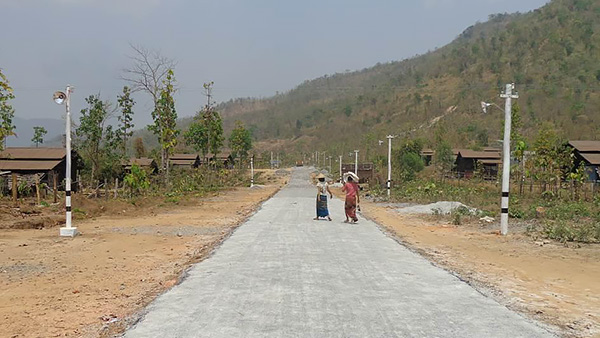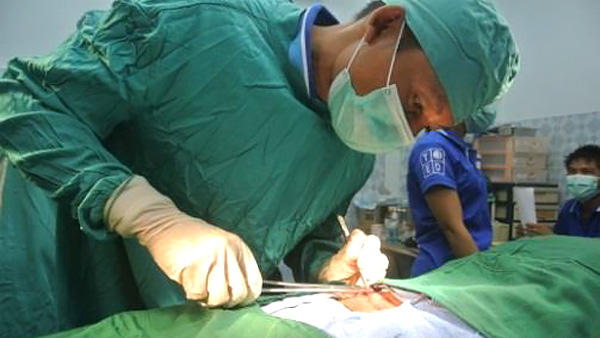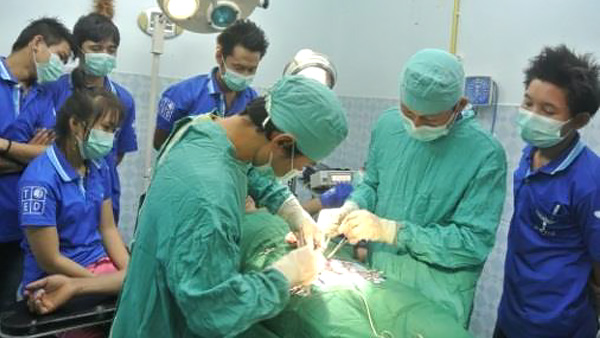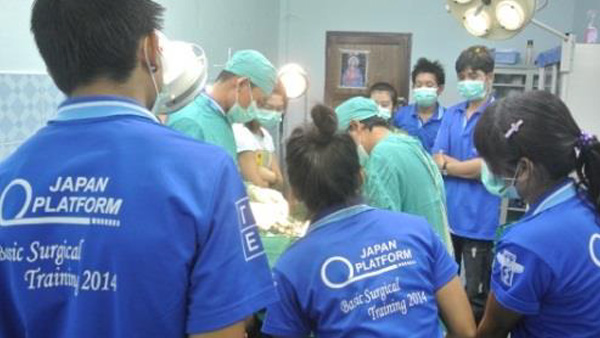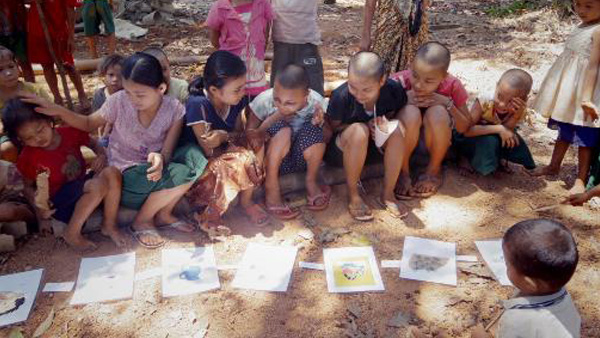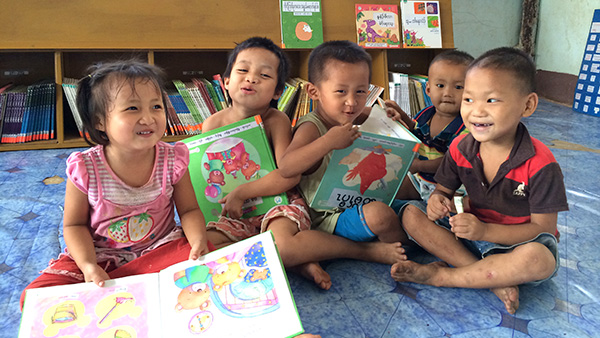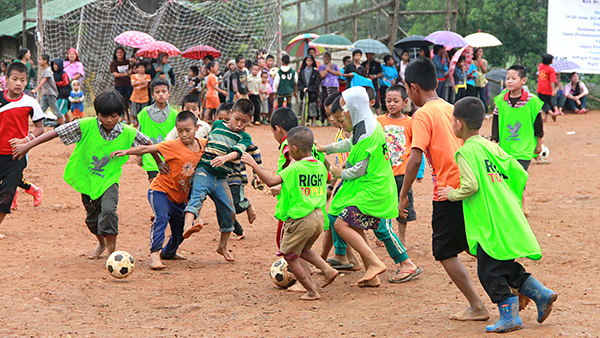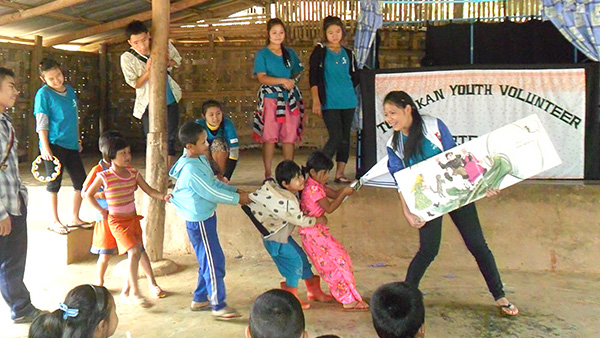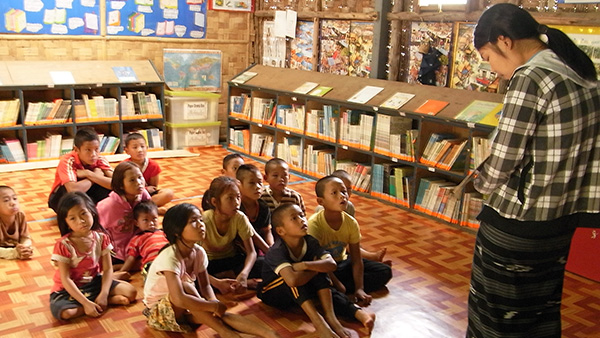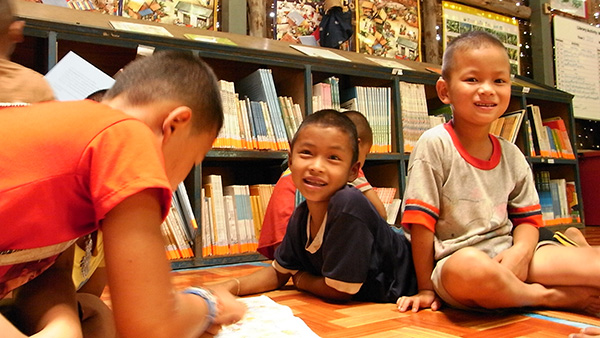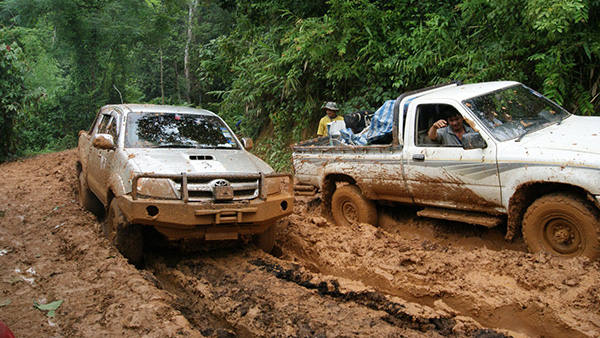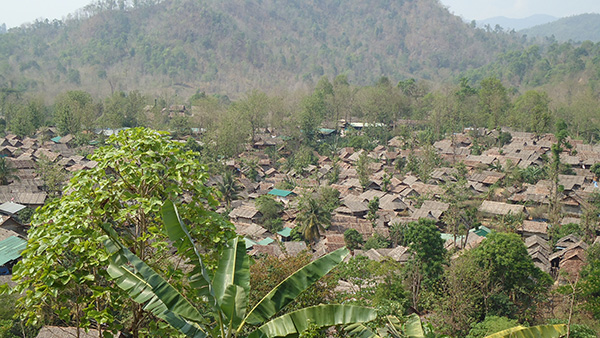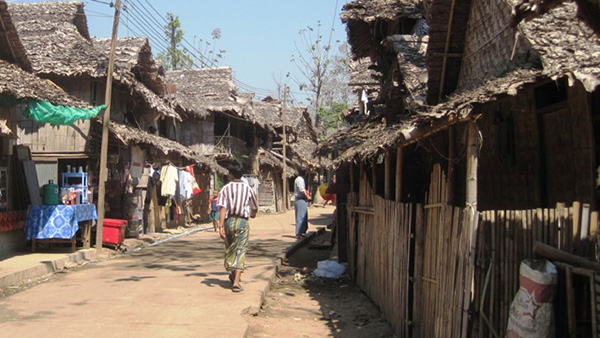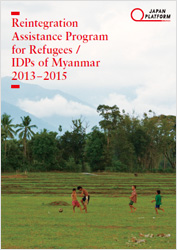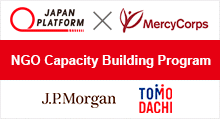Myanmar
Reintegration Assistance Program for Refugees/IDPs of Myanmar (2013-2015)
April 2013~
By upgrading basic infrastructure and social service standards, the program aims to promote voluntary repatriation and reintegration of the refugees and internally displaced persons (IDPs) to their desired homes
With ceasefire agreements reached with some of the ethnic armed organizations in October 2015, and a new administration led by the National League for Democracy (NLD) formed in April 2016, the situation in Myanmar has been changing. JPF has launched a three-year humanitarian assistance program from April 2013, and many projects focusing on upgrading basic infrastructure and social service standards were implemented, so that refugees and internally displaced persons (IDPs) who had to leave their homelands due to conflicts, can peacefully return to their desired homes. On Thai side of the border, we engaged in library activities within refugee camps and basic medical training for the young medics among refugee communities. In Myanmar, such basic infrastructures as water supply systems, solar panels and rural health centers were set up. At the same time, the program also covered the support for the victims of landmines as well as for the children.
In the fall of 2015, external experts conducted the overall program evaluation.. The evaluation result suggested that JPF has to strengthened the non-physical aspects of the projects and the projects' sustainability, for example, by emphasizing the follow up. Based on the result, JPF has decided to extend the program period for one more year. Simultaneously, we will continue to monitor therepatriatoin and reintegration trends and prepare for when needs for assistance may arise.
Program Goal (2015)
The Program aims to provide comprehensive assistance to refugees residing in Thailand, Internally Displaced Persons, returnees, and potential host communities in Myanmar to enhance the preparedness for their eventual reintegration and resettlement in Kayin State Myanmar.
Expected Outcomes (2015)
- To enable refugees living in Thailand, near the Myanmar border, to not only develop the capacity to gather relevant information, but also to prepare for their eventual return in a multi-faceted way.
- To build and improve basic community infrastructure including social services in the Kayin State of Myanmar, which had experienced delays due to the protracted armed conflict in the region.
- To ensure that communities in Kayin, which have already hosted or will host returnees, will have a better understanding of the current situation surrounding refugees and IDPs.
Budget (2013-2015)
Total: JPY 1,292,000,000
(approx. USD 14.2 million*/10.7 million**)
* USD 1.00 = JPY 91 / **USD 1.00=JPY 120
Reintegration Assistance Program for Refugees/IDPs of Myanmar (2013-2015)
NGO's Project : Basic Human Needs Association (BHN)
Using solar power generation, we provided electricity to schools, hospitals, and other public facilities in the rural villages of Kayin (Karen) State that had little power supply.
 Due to the prolonged conflict between the Myanmar military and the ethnic armed groups, infrastructure development in Kayin State has been significantly delayed. This meant that once you stepped outside of a city, you found almost no power supply. Schools could hardly hold evening and early morning supplemental classes for students in upper grades who are preparing for entrance exams, and hospitals could not use any of their testing equipment. For three years, BHN installed solar power generation systems to provide electricity to these public facilities utilizing the grant from JPF.
Due to the prolonged conflict between the Myanmar military and the ethnic armed groups, infrastructure development in Kayin State has been significantly delayed. This meant that once you stepped outside of a city, you found almost no power supply. Schools could hardly hold evening and early morning supplemental classes for students in upper grades who are preparing for entrance exams, and hospitals could not use any of their testing equipment. For three years, BHN installed solar power generation systems to provide electricity to these public facilities utilizing the grant from JPF.
Voice from the Field
I am so happy to be able to pump up water using solar power.
 The 1,554 villagers in our village of Kaw Tar Ho [in Kayin State*] mainly make our living out of agriculture and livestock raising. As our village lies on top of a rocky mountain, the wells that were dug through the bedrock are shallow. Those wells dry up during the dry season from March to May, so that we suffer from the shortage of water. In 2008, a deep well was dug in Shwe In Don village, which is about 500 meters away from our village, and we laid pipes to bring water to our village. But we finally had to abandon this water source after a year because we could no longer afford the gasoline to run the pump. Now we can now pump up water using solar power system provided by BHN instead of gasoline, and we are very happy about this. We thank everyone at JPF and BHN. Please send our gratitude to the people of Japan who supported us as well. - Beneficiary of a BHN project
The 1,554 villagers in our village of Kaw Tar Ho [in Kayin State*] mainly make our living out of agriculture and livestock raising. As our village lies on top of a rocky mountain, the wells that were dug through the bedrock are shallow. Those wells dry up during the dry season from March to May, so that we suffer from the shortage of water. In 2008, a deep well was dug in Shwe In Don village, which is about 500 meters away from our village, and we laid pipes to bring water to our village. But we finally had to abandon this water source after a year because we could no longer afford the gasoline to run the pump. Now we can now pump up water using solar power system provided by BHN instead of gasoline, and we are very happy about this. We thank everyone at JPF and BHN. Please send our gratitude to the people of Japan who supported us as well. - Beneficiary of a BHN project

